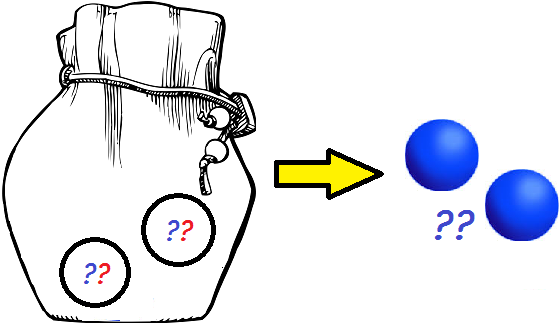Two balls

Jimmy flips a biased coin with probability of landing on heads. If it's heads he puts a blue ball in the bag and if it's tails he puts a red ball in the bag. He does this twice, so two balls are now in the bag.
If the probability that two red balls are in the bag equals the probability that a red and a blue are in the bag, what is the probability that two blue balls are in the bag?
Please provide your answer to 3 decimal places.
The answer is 0.111.
This section requires Javascript.
You are seeing this because something didn't load right. We suggest you, (a) try
refreshing the page, (b) enabling javascript if it is disabled on your browser and,
finally, (c)
loading the
non-javascript version of this page
. We're sorry about the hassle.
Let h be the probability that the coin flips heads.
And let P ( m n ) = probability that the first one Jimmy put in the bag was color m ( B or R for blue or red) and the second one he put in was color n ( B or R ).
So,
We know that:
P ( B R ) + P ( R B ) = P ( R R )
So,
2 h ( 1 − h ) = ( 1 − h ) 2
2 h = 1 − h
h = 3 1
So,
P ( H H ) = h 2 = 9 1 = 0 . 1 1 1 to three decimal places.